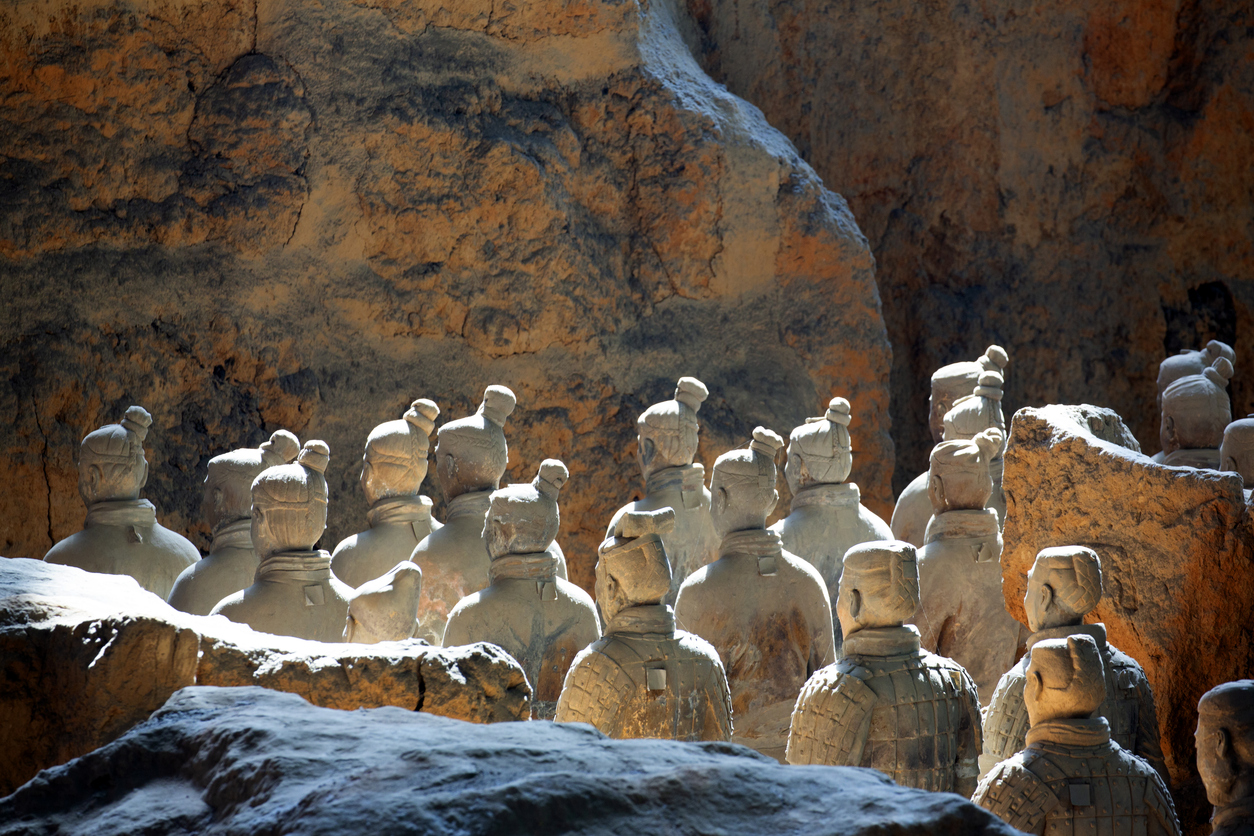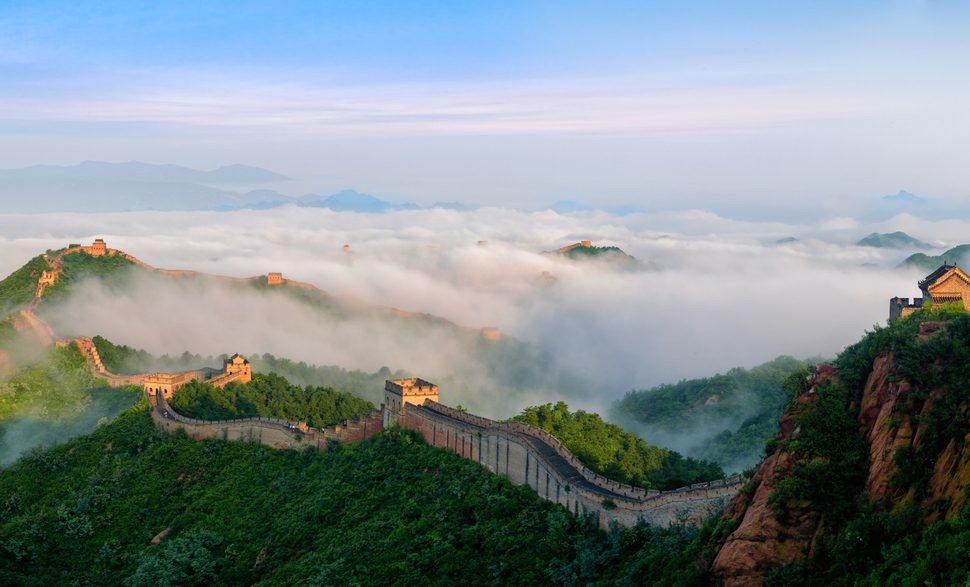An Army That Refused to Let Its Emperor Die
In 1974, farmers digging a well near Xi’an struck fragments of pottery. What seemed like broken roof tiles turned out to be pieces of life-sized warriors. Their discovery unveiled Emperor Qin Shi Huang’s underground army — 8,000 clay soldiers who’ve stood guard for 2,200 years.
Today, millions visit these silent sentinels. But most miss the deeper story hidden in the details.
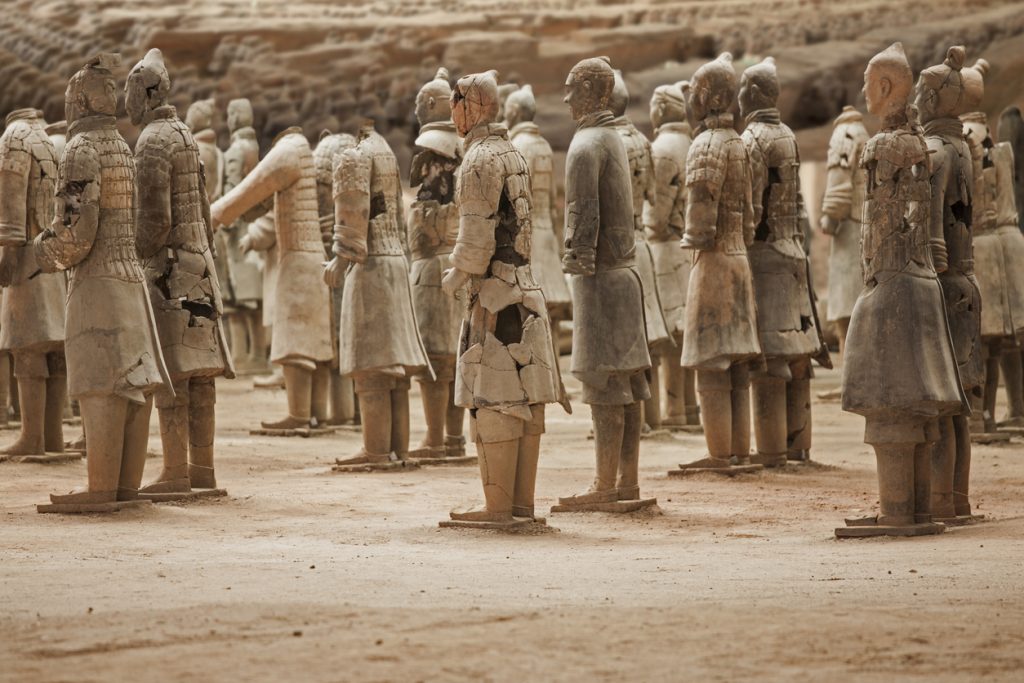
The Emperor Who Conquered Death
Qin Shi Huang unified China for the first time at age 38. He standardized writing, currency, and measurements. He connected scattered walls into what became the Great Wall. But unification wasn’t enough.
Ancient texts record his desperate search for immortality elixirs and consultations with alchemists. When immortality proved elusive, he pivoted: if he couldn’t live forever, he’d rule forever in the afterlife.
Construction of his tomb began the moment he took power. Over 700,000 laborers spent 38 years creating an underground empire — complete with warriors, chariots, entertainers, and according to historical accounts, rivers of mercury and crossbow traps.
The main burial mound remains sealed. Modern soil testing confirms abnormally high mercury levels. Chinese authorities won’t excavate until preservation technology improves. Whatever lies beneath could rewrite Qin Dynasty history.
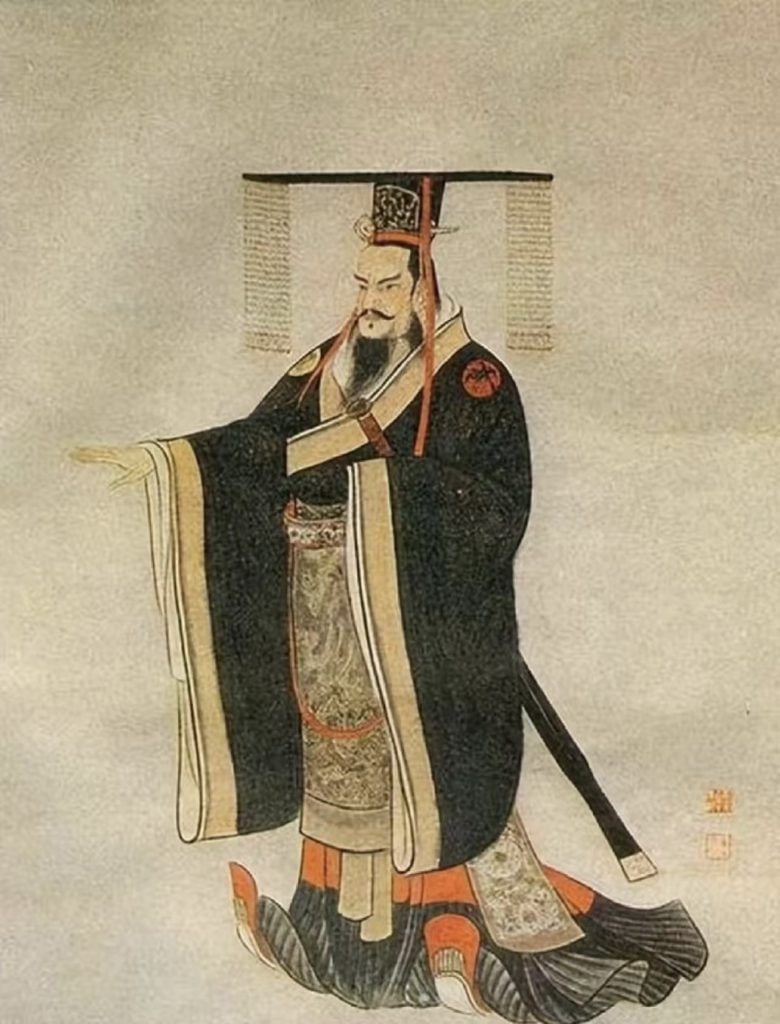
What Makes Each Warrior Unique
The Terracotta Army wasn’t symbolic — every detail reflects real military organization:
Rank shows in everything. Infantry wear simple armor. Officers sport elaborate headgear with specific knot styles. Generals feature ornate armor and commanding postures. Even hairstyles reveal rank — topknots for officers, simple buns for foot soldiers.
They were battle-ready. Archaeologists discovered over 10,000 bronze weapons, many still sharp. Some swords showed chromium coating — anti-rust technology the West wouldn’t develop until the 1930s.
No two faces match. Sculptors modeled warriors after real soldiers, capturing individual features, expressions, and ethnic diversity from across the empire.
They were originally brilliant. When first unearthed, archaeologists saw crimson robes, purple trousers, pink faces, black hair. Within minutes, the ancient lacquer cracked and pigments turned to dust. The army you see today is a pale shadow of its original vibrancy.
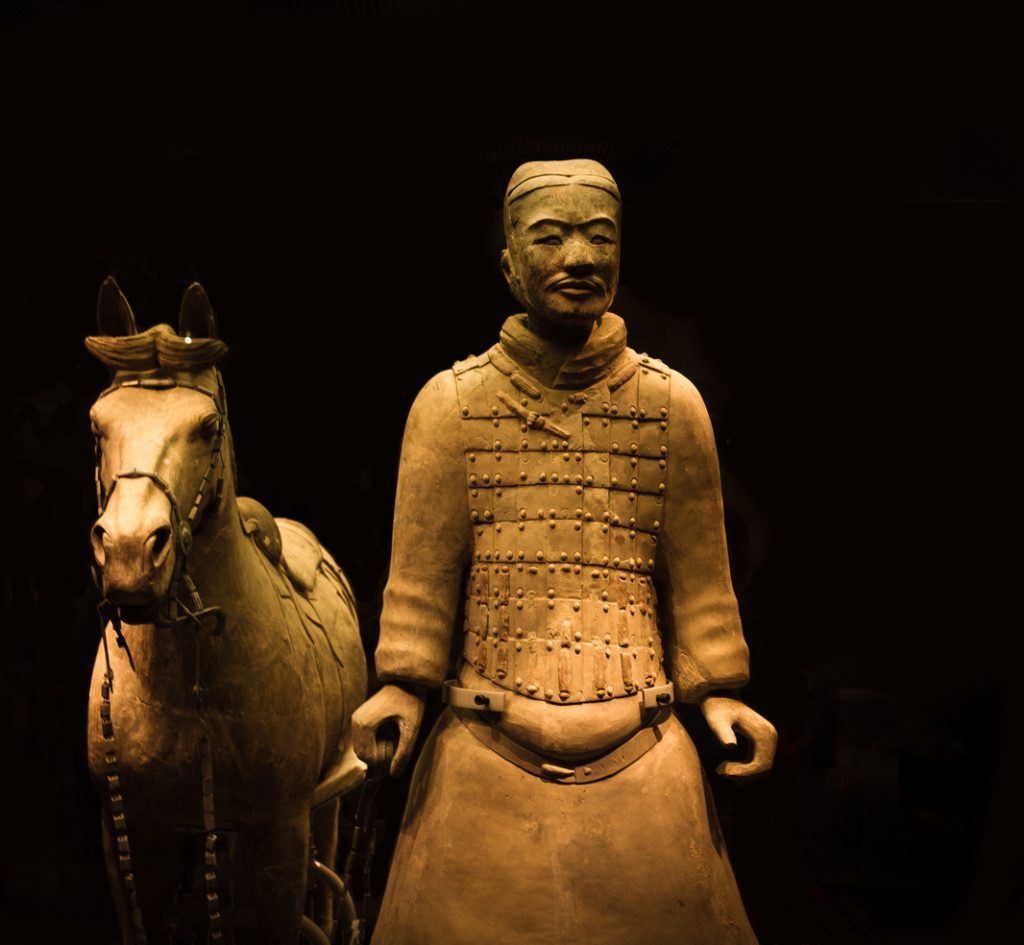
The Three Pits: What You'll See
Pit 1: The Main Army
Walking into this massive hangar stops most visitors mid-step. Six thousand warriors stretch into the distance in precise formation. The front shows fully restored soldiers. The back reveals archaeological reality — shattered pottery, warriors still half-buried, with archaeologists piecing together fragments daily.
Detail most visitors miss: Check the warriors’ shoes. Tread patterns vary — square grips for mud, diagonal patterns for rocks. Even footwear was customized.
Pit 2: Military Strategy
This pit reveals Qin tactical sophistication: cavalry squadrons (no stirrups existed yet), kneeling crossbowmen in defensive formation, standing archers, and war chariots. Glass panels let you watch real-time restoration work.
Pit 3: The Command Center
Only 68 warriors occupy this smallest pit, arranged in a U-shape around what was likely a command post. These may be generals frozen mid-ceremony before battle.
Exhibition Halls
Climate-controlled halls showcase:
- Bronze chariots with working wheels, folding parasols, and complex pulley systems
- Weapons demonstrating precision engineering and interchangeable parts
- Acrobats and entertainers — the emperor expected shows in the afterlife
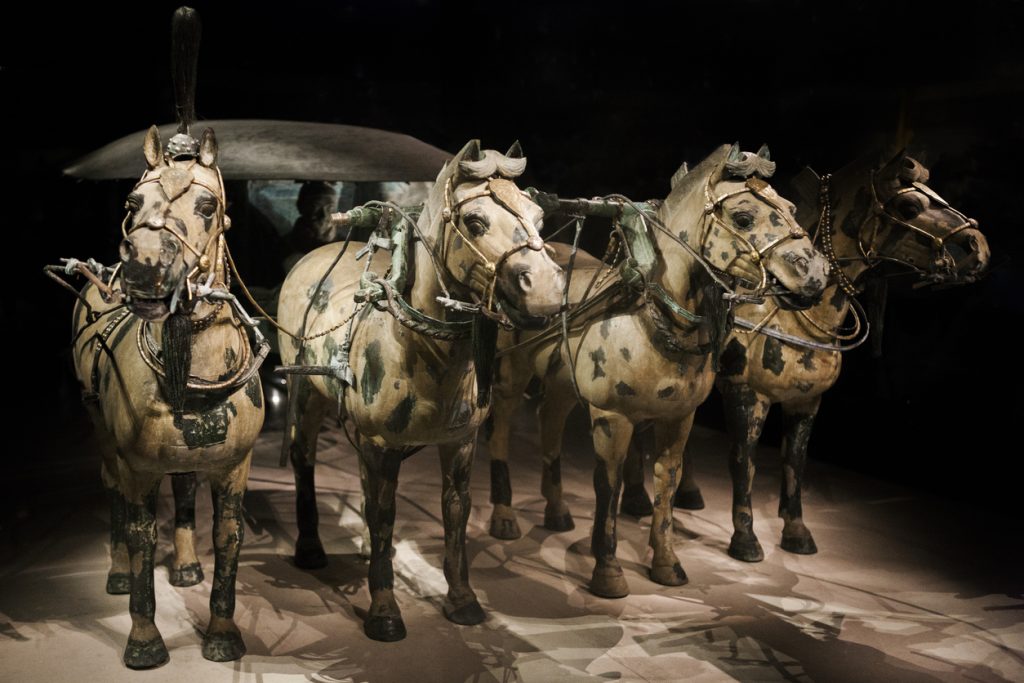
Why Independent Visits Fall Short
The site sits 22 miles from Xi’an city center. While independent travel is possible, several realities diminish the experience:
Language barriers are significant. English signage exists but provides minimal context. Without understanding what you’re seeing, warriors become impressive statues rather than historical revelation. On-site guides often have limited English that American visitors struggle to follow.
Transportation creates stress. Public buses take 70+ minutes on confusing routes. Negotiating return taxis during peak hours leaves visitors stranded or overpaying. Many rush through the site to catch arranged rides.
Crowds overwhelm during peak season. Summer and Chinese holidays bring shoulder-to-shoulder conditions. Independent visitors jostle for views while tour groups occupy prime positions.
You miss the details that matter. Why do some warriors have green faces? (Bronze oxidation from nearby weapons.) What do hand positions reveal? (Missing wooden weapons.) Which facial features indicate rank? Without expert guidance, these insights disappear.
The broader story fragments. The warriors are extraordinary, but they’re one piece of a larger narrative. Emperor Qin’s tomb mound, nearby archaeological sites, and Xi’an’s other historical treasures connect into a complete story. Coordinating multiple sites independently becomes logistically complex.
Today, millions visit these silent sentinels. But most miss the deeper story hidden in the details.
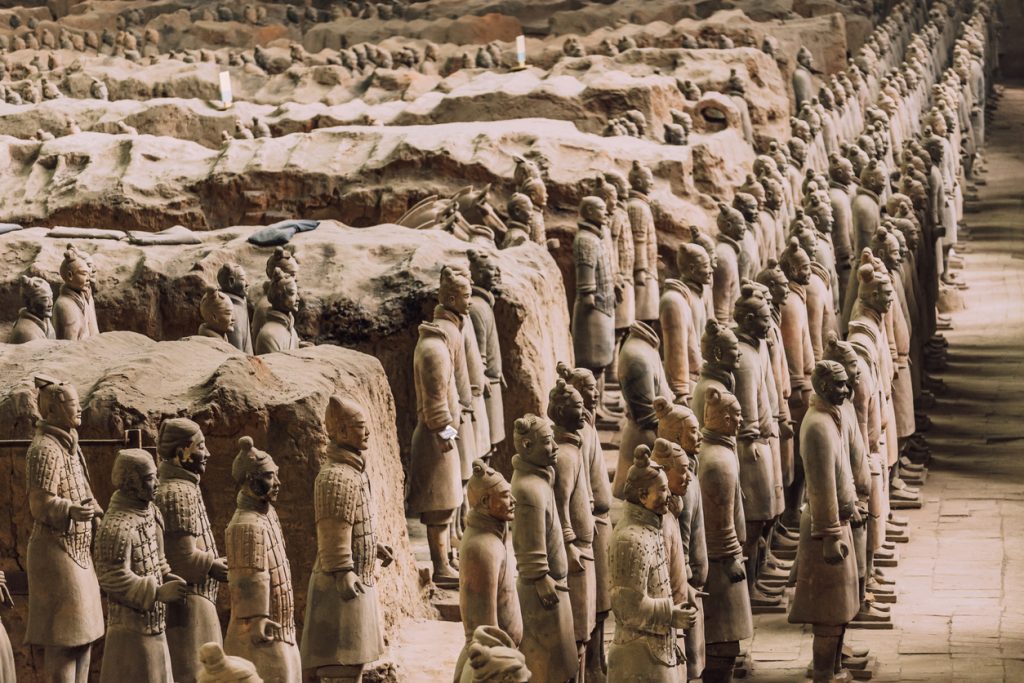
What Expert Guidance Changes
You see what others miss. Expert guides point out restoration techniques, explain battle formations, and decode armor styles that reveal military hierarchy. They know exactly when tour groups arrive and position you for optimal viewing during quiet windows.
Context deepens appreciation. Understanding Chinese afterlife beliefs, the significance of tomb goods, and Qin Dynasty warfare transforms warriors from curiosities into profound historical statements.
Logistics disappear. No navigating bus routes, negotiating fares, or worrying about tickets. You focus on the experience while someone else handles the details.
Questions get real answers. Wondering about the tomb’s mercury rivers? Curious about ongoing excavations? Expert guides discuss these substantively, not superficially.
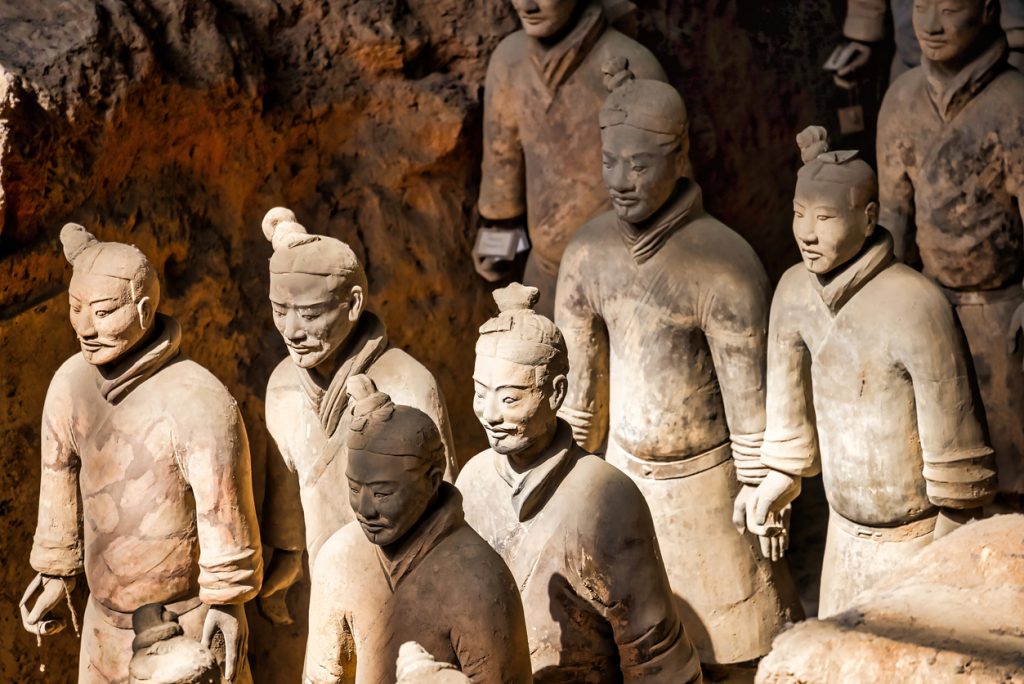
Beyond the Warriors: Xi'an's Connected History
Ancient City Wall: Cycle the 8.5-mile circuit of one of China’s best-preserved fortifications (2-3 hours)
Muslim Quarter: Explore centuries of Islamic culture within Chinese context, best visited at evening
Big Wild Goose Pagoda: 652 CE Buddhist pagoda representing Silk Road cultural exchange
Emperor Qin’s Mausoleum: The sealed tomb mound and surrounding archaeological sites
Rushing everything into one day creates exhaustion and superficial understanding. Spreading Xi’an across 2-3 days allows proper appreciation.
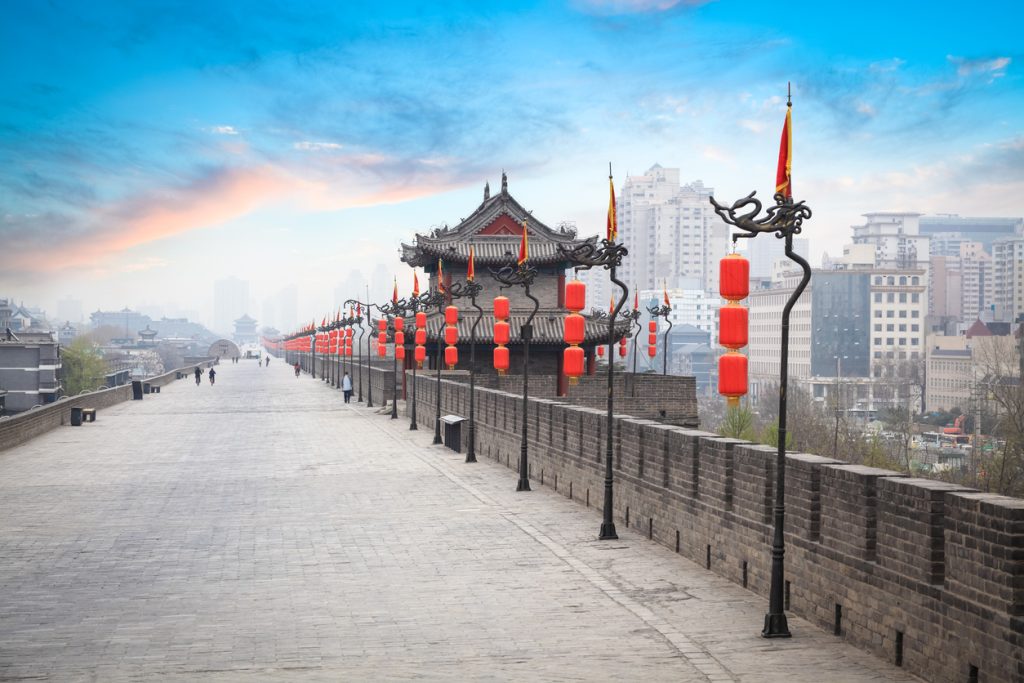
Practical Details
Best time: Spring (April-May) and autumn (September-October) for mild weather and moderate crowds
Duration: 2.5-3 hours minimum at the Warriors site
What to bring: Comfortable walking shoes, water, light jacket, camera (no flash), hat and sunscreen
Accessibility: Wheelchair-accessible with ramps to viewing platforms. Rentals available at entrance.
Why the Warriors Matter
Standing before thousands of clay soldiers — each face distinct, each silent for 2,200 years — connects you to human ambition that transcends cultures and centuries.
These warriors weren’t created by people we barely understand. They were made by sophisticated engineers, artists, and strategists working with resources and determination that still astound modern observers. Emperor Qin’s refusal to be forgotten resulted in permanence that outlasts empires.
Most visitors expect impressive ruins. What they experience is different — a physical manifestation of one human’s attempt to conquer death itself. That patient, eternal presence stays with you.
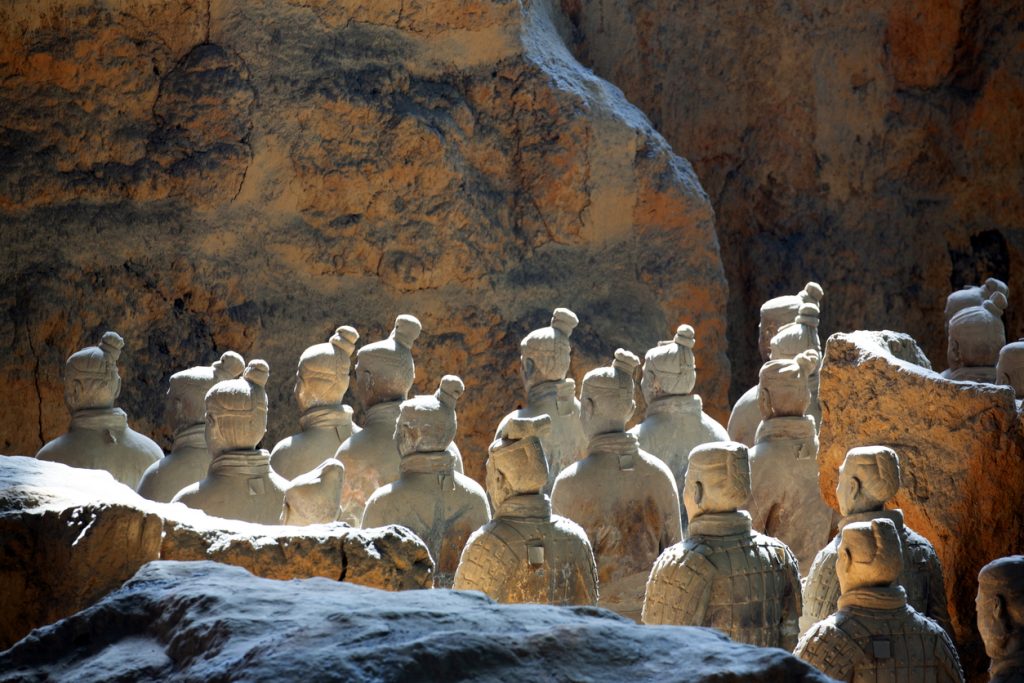
Experience Xi'an the Right Way
The Terracotta Warriors reward expertise and preparation. Our Xi’an tours combine expert English-speaking guides who bring the warriors to life, strategic timing that avoids crowds, and carefully designed itineraries connecting Xi’an’s historical sites into a coherent story.
We handle logistics so you focus on experiencing one of the world’s most remarkable archaeological sites. Whether you prefer small groups or private experiences, we create journeys matching your pace and interests.
Ready to meet the Terracotta Warriors? Contact us to design your perfect China itinerary.

